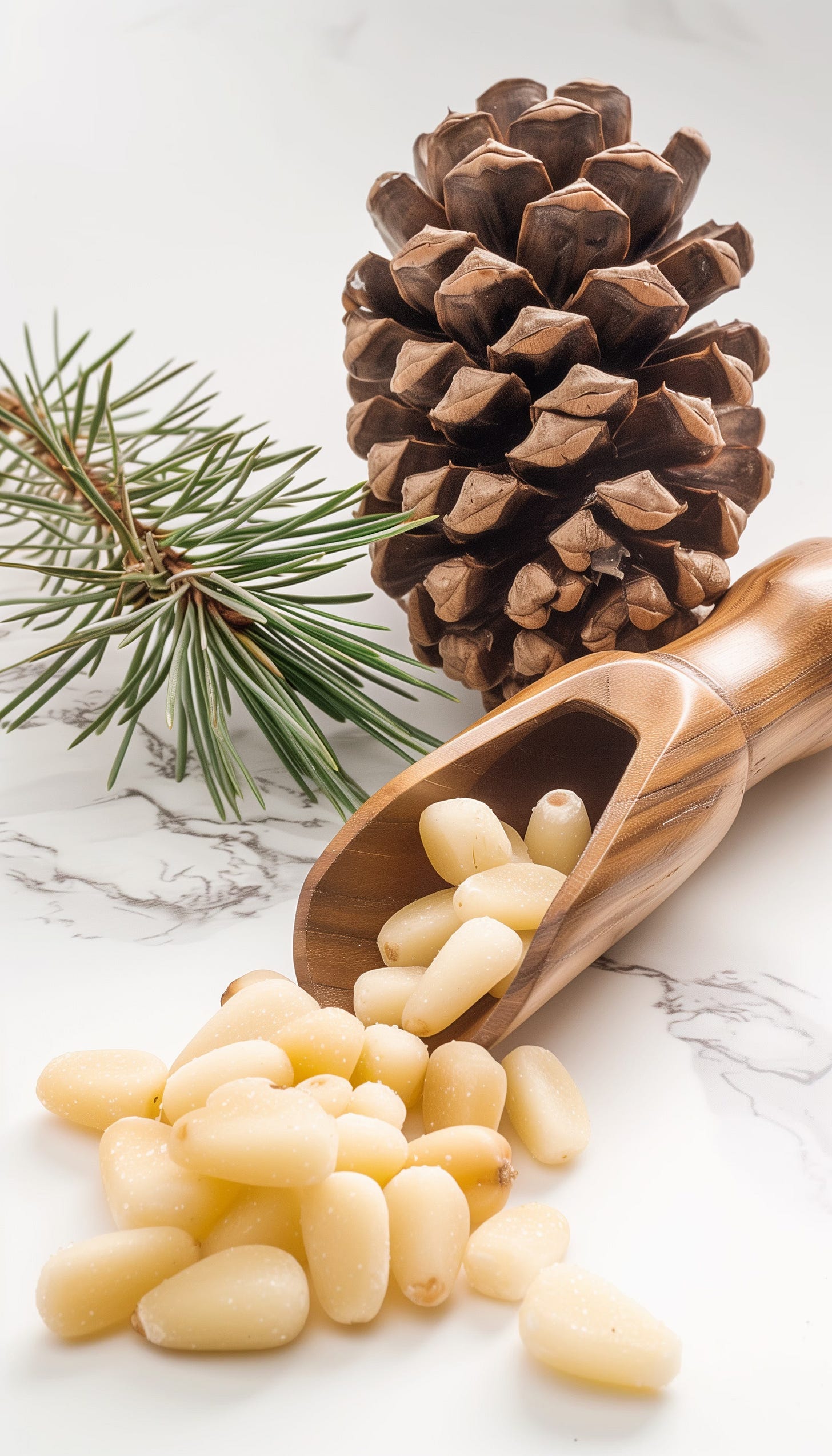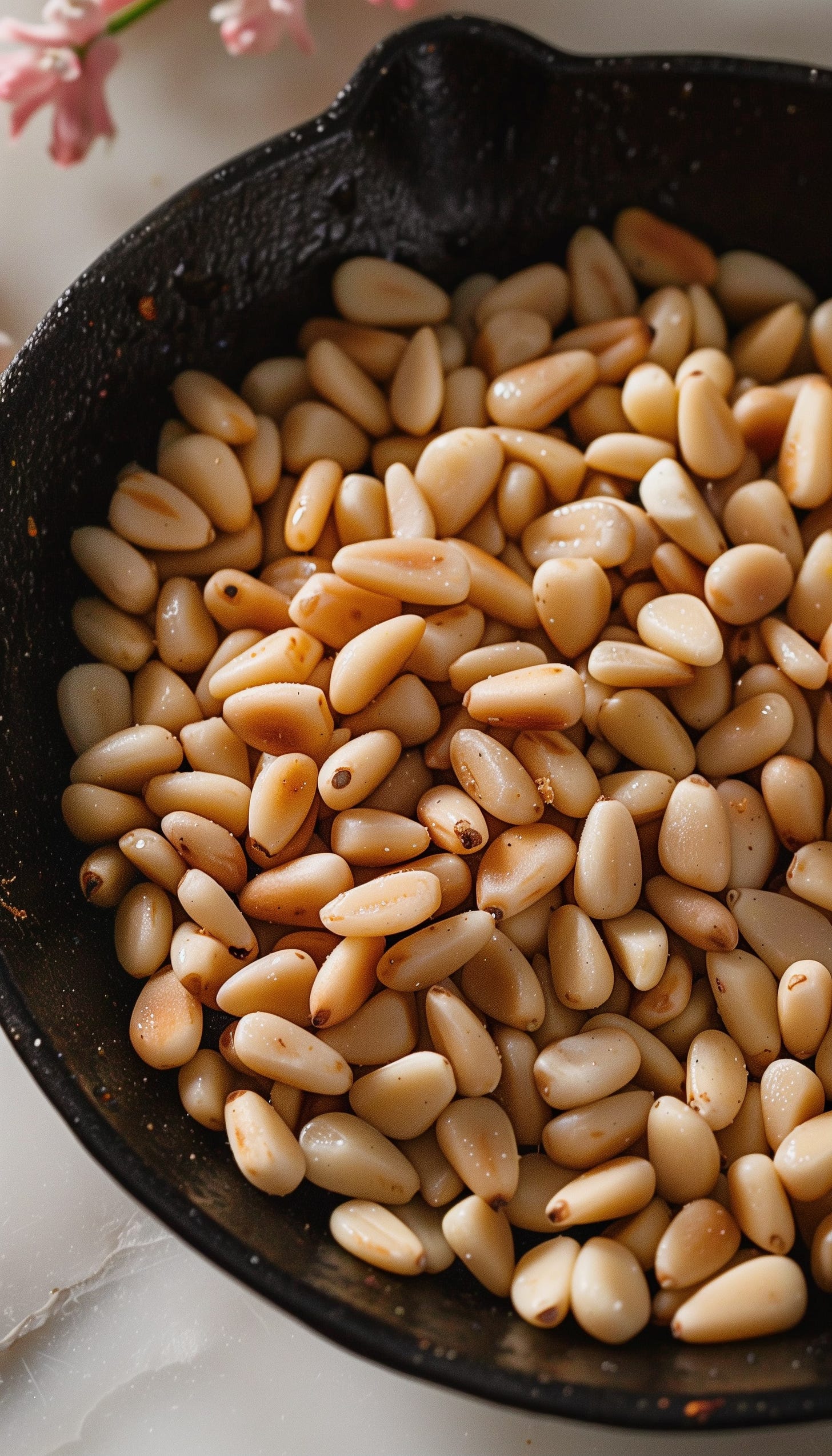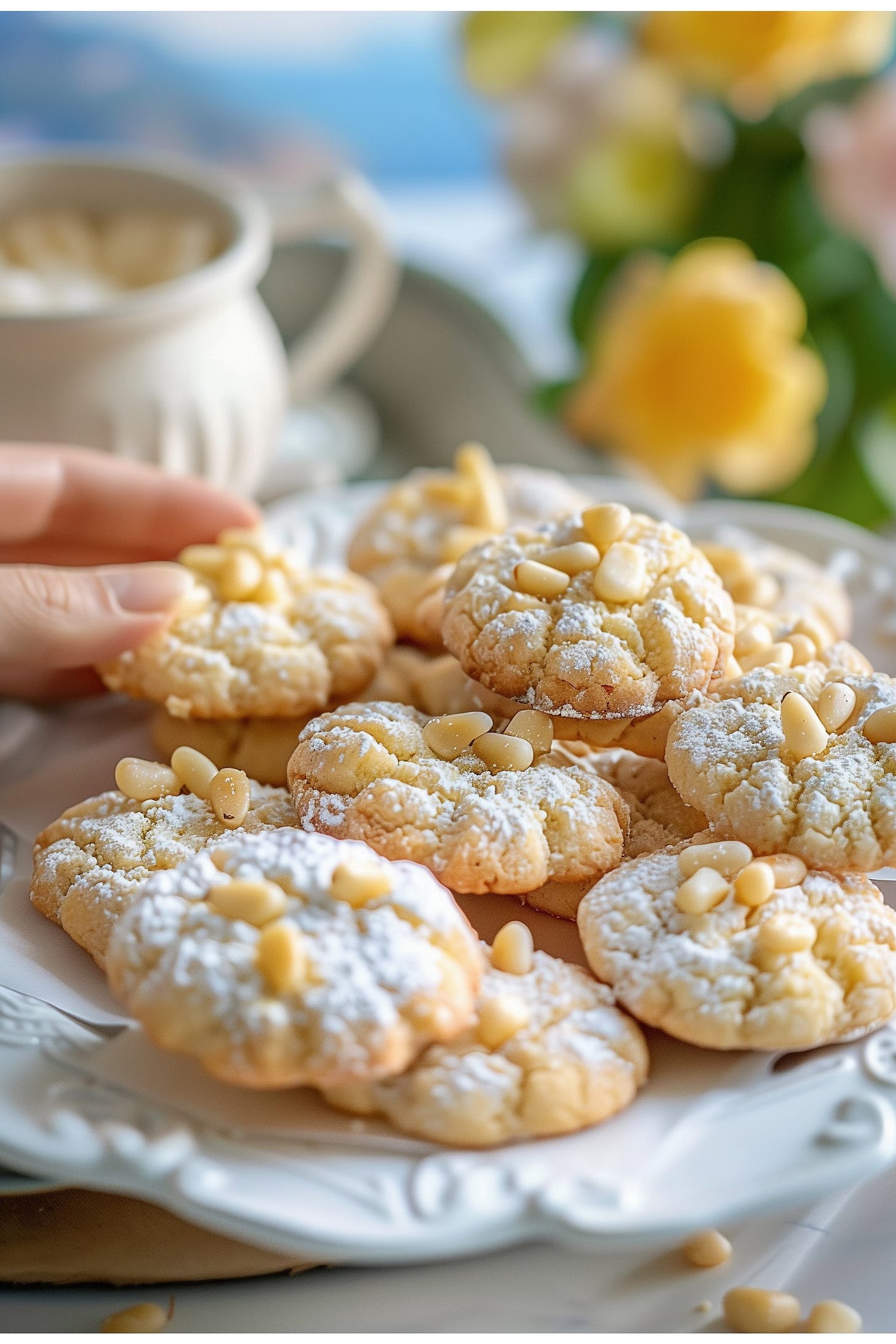Pine nuts, the edible seeds of pine trees, have been cherished for their delightful taste and impressive health benefits for centuries. With a rich history and cultural significance, pine nuts are not only a tasty addition to many dishes but also a nutritious snack. Let’s delve into the origins, historical and cultural significance of pine nuts, their health benefits, and how to toast them for an easy snack.
Origins and Historical Significance
Pine nuts, also known as pignoli or pinoli, are harvested from the cones of certain species of pine trees, primarily found in the Northern Hemisphere. These seeds have been a staple food source for various cultures throughout history. Ancient Greeks and Romans valued pine nuts for their culinary and medicinal properties, while Native American tribes used them as a vital food source during harsh winters.
In modern times, pine nuts continue to play a significant role in Mediterranean, Middle Eastern, and Asian cuisines. They are often used in traditional dishes such as pesto, pilafs, and desserts, reflecting their versatility and enduring appeal.
Health Benefits of Pine Nuts
Rich in Nutrients Pine nuts are packed with essential nutrients, including vitamins (E, K, B1, and B3), minerals (magnesium, zinc, iron, and manganese), and healthy fats. These nutrients are crucial for maintaining overall health and well-being, supporting immune function, and promoting energy production.
Heart Health The monounsaturated fats found in pine nuts, particularly oleic acid, help reduce bad cholesterol levels (LDL) and increase good cholesterol levels (HDL). This balance is vital for maintaining cardiovascular health and reducing the risk of heart disease.
Antioxidant Properties Pine nuts contain antioxidants such as vitamin E and polyphenolic compounds that help protect cells from oxidative stress and free radical damage. This antioxidant activity supports healthy aging and reduces the risk of chronic diseases.
Weight Management Despite being calorie-dense, pine nuts can aid in weight management. They are a good source of protein and fiber, which promote satiety and help control appetite. Additionally, the pinolenic acid in pine nuts stimulates the release of appetite-suppressing hormones, aiding in weight loss efforts.
Brain Health The omega-3 fatty acids, magnesium, and iron in pine nuts contribute to brain health and cognitive function. These nutrients support the production of neurotransmitters, improve blood flow to the brain, and help protect against neurodegenerative diseases.
How to Toast Pine Nuts for an Easy Snack
Toasting pine nuts enhances their natural flavor and adds a delightful crunch, making them a perfect snack or addition to various dishes. Here’s a simple method to toast pine nuts:
Ingredients:
1 cup of pine nuts
Instructions:
Preheat a skillet: Place a dry skillet or frying pan over medium heat.
Add pine nuts: Spread the pine nuts evenly in the skillet.
Toast: Cook the pine nuts, stirring frequently, for about 2-3 minutes or until they turn golden brown and emit a nutty aroma. Be careful not to let them burn, as they can toast quickly.
Cool: Remove the toasted pine nuts from the skillet and let them cool on a plate or baking sheet.
Toasted pine nuts can be enjoyed on their own as a snack, sprinkled over salads, added to pasta dishes, or incorporated into baked goods for an extra layer of flavor and nutrition.
Pignoli Cookies Recipe - Italian Pine Nut Cookies
Pignoli cookies are a traditional Italian treat made with pine nuts and almond paste. They are deliciously chewy with a nutty flavor, perfect for any occasion.
Ingredients:
8 ounces almond paste
1/2 cup granulated sugar
1/2 cup powdered sugar
2 large egg whites
1/4 teaspoon salt
1 teaspoon vanilla extract
1 cup pine nuts
Instructions:
Preheat oven: Preheat your oven to 350°F (175°C). Line a baking sheet with parchment paper.
Prepare almond paste mixture: In a food processor, break the almond paste into small pieces. Add granulated sugar, powdered sugar, salt, and vanilla extract. Process until the mixture is well combined and crumbly.
Add egg whites: Add the egg whites to the almond paste mixture and process until smooth and sticky. The dough will be quite thick.
Shape cookies: Drop spoonfuls of dough onto the prepared baking sheet. The dough can be sticky, so dampen your hands with water to shape them into small balls.
Coat with pine nuts: Roll each ball in pine nuts, pressing lightly to adhere. Place the coated dough balls back onto the baking sheet.
Bake: Bake for 15-18 minutes, or until the cookies are lightly golden on the edges. The centers will still be soft.
Cool: Allow the cookies to cool on the baking sheet for a few minutes before transferring them to a wire rack to cool completely.
These delightful pignoli cookies are a perfect way to enjoy the unique flavor of pine nuts and share a piece of Italian tradition with friends and family.
Pine nuts are a delicious and nutrient-dense addition to any diet, offering numerous health benefits ranging from heart and brain health to antioxidant protection and weight management. With their rich history and cultural significance, these small seeds pack a powerful punch. Toasting pine nuts is an easy way to enhance their flavor and enjoy them as a versatile and healthy snack. Additionally, trying out recipes like traditional Italian pignoli cookies can bring a delightful and nutritious treat to your table. So, next time you’re looking for a nutritious treat, consider reaching for a handful of pine nuts.Pine nuts, the edible seeds of pine trees, have been cherished for their delightful taste and impressive health benefits for centuries. With a rich history and cultural significance, pine nuts are not only a tasty addition to many dishes but also a nutritious snack. Let’s delve into the origins, historical and cultural significance of pine nuts, their health benefits, and how to toast them for an easy snack.










